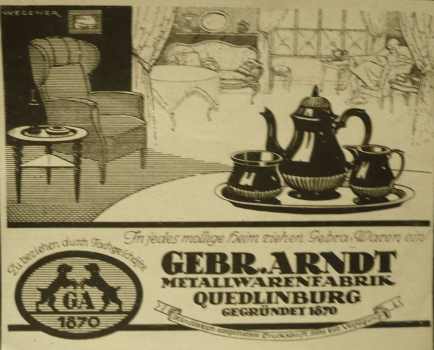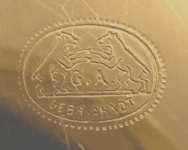YOUR GUIDE TO FEBRUARY NEWSLETTER:
articles
new members
members' window
mail to ASCAS
replies to questions
a page per month
a silversmith per month
a word per month
a crest per month
a year per month
contributors to this Newsletter
search engine
disclaimer and privacy policy
Magdalena and William Isbister present:
Enameled German Ocean Liner Thimbles



In the early part of the twentieth century, when transatlantic travel was at its zenith, the ocean liners themselves were owned by just a few companies. Two such companies were the German companies Hamburg-Amerikanische Packetfahrt-Actien-Gesellschaft (HAPAG) and Norddeutscher Lloyd (NDL). At their busiest they boasted two Atlantic crossings a week and vied with each other to take the Blue Riband, an unofficial accolade given to the fastest liner making the transatlantic crossing on regular service. Later HAPAG and NDL merged to become HAPAG-LLOYD. At about the same time, Ketcham and McDougall (KMD) and Gebrüder Gabler, each, designed series of enamelled thimbles which depicted the boats and which were, presumably, sold on board the early transatlantic liners as souvenirs since they did not bear dates signifying a commemoration of any particular event. Souvenirs were sold by barbers from cases in their shop. Examination of deck plans confirmed that whilst the boats did have barber and cigar shops they did not seem to have gift shops. Gifts were, however, on display in glass cases in the foyers of the boats and passengers wishing to purchase souvenirs had to contact a steward or the barber who would then obtain the item for them (personal communication, J B Hawley - www.luxurylinerrow.com.).
We don't know how many different "Ocean Liner" thimbles were made and no records are known to list the thimbles. In an early Gebrüder Gabler workbook, however, a design for such a thimble is drawn and described ("D Amerika" -1905 -1958) but no specific ships are mentioned in the text. The Gebrüder Gabler thimbles have enamelled borders with a painted image of a ship and a white enamel rectangle with the name of the ship.....
click here

Welcome to new ASCAS members:
Diana Bromelow - The Netherlands
Gilles Cattermore - England UK
Lisa Jasven - South Africa
Kenneth M Koff - USA
Kathleen Mercer - USA
Royal Barnard writes:
... I have finally gotten to study this lovely little French serving piece. 8' overall. Bearing marks shown.
I believe 1819-1838 and .800 fine silver, but the rest baffles me.
I adore it and would love to understand more.
Many thanks and kind regards,
Royal Barnard
Your piece isn't French but Dutch (Holland). The date is 1929, silver fineness 833/1000, maker A.H. Kuylemburg, Schoonhoven, active 1927-1931
Giorgio Busetto
Bo Pang writes:
... Recently I have got a early silver work. There are 4 marks on this silver work. All these marks are made on the back side of base.
One mark is recognized as Augsburg Silver on 1734-1735. But I can't find the meaning of rest of 3 marks.
I didn't find any information on these marks from Internet. Could you please have a look and let me know what they are.
Best wishes,
Bo Pang
Not Augsburg 1734-1735 but Hanau silver, late 19th century. The maker is, possibly, Georg Roth but the attribution can't be certain as Hanau marks aren't registered trademark but the mere reproduction of ancient silver hallmarks.
Similar symbols were used by different manufacturers and familiar or economic interaction between various Hanau firms could be at the base of marks crossover.
See my website at http://www.silvercollection.it/germansilverhallmarks4.html
Giorgio Busetto
In this column we presents a page obtained from makers'
brochures, books, auction catalogs, advertising or whatever
other printed paper, related to silver, that may be of interest
for ASCAS members.
The images will be published at a "low resolution" level and for
private and personal use only.
This column is published under the kind permission of Giorgio
Busetto's website
SILVER ADVERTISEMENTS
FACTORIES, PLANTS, SALESROOMS, SHOPS AND WORKSHOPS: OLD IMAGES

This month ASCAS presents an image of an ancient advertisement of
GEBR. ARNDT
Metallwarenfabrik, Quedlinburg, Germany

Founded in 1870 in Quedlinburg, Saxen Anhalt (Germany).
Obtained a gold medal at Paris 1900 World Exhibition.
Advertised tableware in brass, nickel and alpaca.


In this column we present an abstract from a page of the "SILVER HALLMARKS WORLDWIDE OVERVIEW"
courtesy of


PORTUGAL
|
